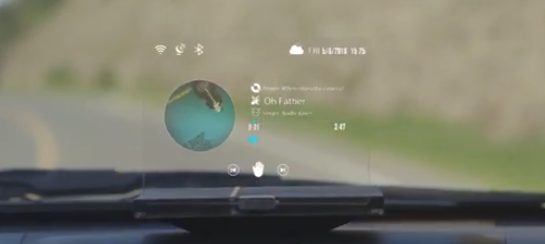Heads-up displays (HUDs) have become increasingly popular devices because they allow drivers to access valuable information and data without turning their eyes away from the road.
Hudly is a heads-up display that uses a mounted projector to access notifications, navigation and vehicle information including driving speed and gas levels. It projects the user’s smartphone content on the windshield, in his or her line of sight, and provides the ability to access favorite Android or iOS apps. Hudly works in any car that has either an On-board diagnostics (OBD)-II port or cigarette lighter adapter. The powerful projector is capable of 14,000 nits, allowing it to be viewable in even bright daylight, according to its makers. Hudly ships in January at future pricing of $299. But Indiegogo backers have been able to order one for a pledge starting at $199 for early birds. Its makers hope to raise $50,000 by Oct. 28.
The main challenge facing Hudly is that there are so many similar products, including the similar-sounding Hudway Glass. Features that might give Hudly an edge over at least certain rival devices is its optical glass combiner that its makers say makes the device’s image crisp. The special coating and curved lens improves optics and displays a virtual image size of 10.8 inches that appears as if it it’s 7 feet ahead of the driver. A potential negative is that Hudly is only compatible with a limited number of smartphones: iPhone 4+ and higher or Android OS 4.2 and higher.



 IScout
IScout
 A head-up display (HUD) can be a handy device in a car, especially when facing low visibility conditions. Such devices provide valuable data for drivers and, because they display information on a transparent screen in front of the windshield, drivers don’t have to look away from the road to see that data. However, most HUDs are expensive, whether they’re purchased built into a luxury car or bought separately as an aftermarket product.
A head-up display (HUD) can be a handy device in a car, especially when facing low visibility conditions. Such devices provide valuable data for drivers and, because they display information on a transparent screen in front of the windshield, drivers don’t have to look away from the road to see that data. However, most HUDs are expensive, whether they’re purchased built into a luxury car or bought separately as an aftermarket product.